When I first learned about Shougang, it was in 2006, when this famous steel plant was going to close down and be transfered in Hebei province. I was starting fieldwork in another industrial neighbourhood linked to a factory and a scholar told me to go check out Shougang and its amazing architecture, on the Western outskirts of the city, right before the beautiful mountains of Mentougou area1. I did not go at the time, because even if you can reach Shougang simply by taking the subway, it was not easy to move from my neighborhood by public transportation. Should I regret not taking the chance then? I don’t think so. Because ten years later, the industrial wasteland looks even more beautiful, overgrown by nature: my favorite abandoned landscapes. Although Shougang is being partly demolished2, the surface is so huge (about 9 square kilometers!) and the industrial equipment so large and sturdy that after all this time, still a rather small proportion of the site is gone or altered.
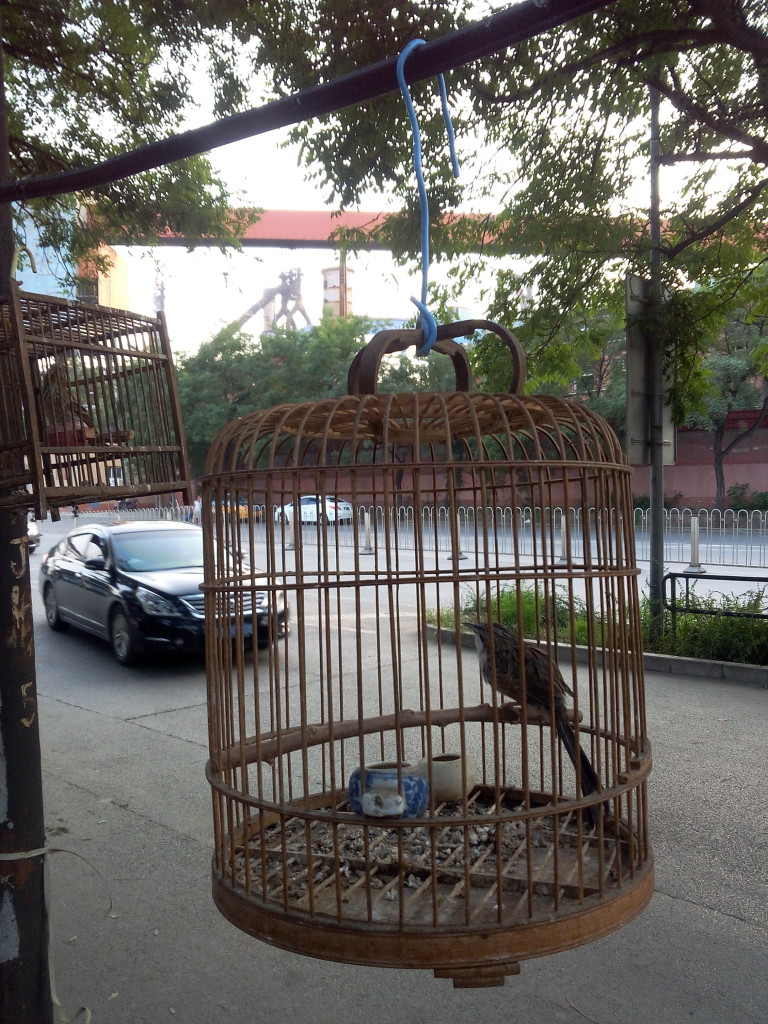
An actor and witness of Chinese history: Beijing danwei
Shougang’s history goes back to 1919, the year of its foundation as the Capital Iron and Steel Company (name: 首都钢铁集团). In 1958, during China’s rush towards heavy industrialisation, the factory was modernized to mass-produce steel. After the Cultural Revolution, it was modernized as Beijing Heavy-duty Mechanical Factory and kept modernizing its existing equipment throughout the years because of the spatial constraint of space in Beijing. After being the leading actor in steel production using blast furnace for several decades, in 2005, the authorities of the central state in China launched a plan of transfer to Tangshan in Hebei province. The factory slowed down its industrial activity until it finally completely stopped production at the end of 2010. Beijing Shougang is a witness of Chinese 20th century history and an ideal-type of the socialist factory world: it employed 110,000 workers and employees in 1978 and the number rose to 260,000 in the mid-1990’s 3. As an archetype of the danwei (单位 danwei) as a « total institution »4, Shougang’s internal politics were based on a unified management system, a logic of full mobilization of the staff toward the increase of production and strict discipline 5. Social control was efficient through a system of rewards and repression, holding together the community of workers. Many of the workers lived in housing provided by their factory. The factory also had a school system, a hospital, and many other facilities that made it a small society. Even after the factory closed, one can find a lot of work tools in industrial buildings but also many objects in more « normal » buildings that were just all left there. This way, one can get a very clear idea of how lively and noisy the place was, and of how the industry was working. Actually, the place is still very lively, with public buses going in and out, with former workers and their families living inside the factory walls…
Exploring Shougang
Shougang was actually my first urbex ever in an industrial wasteland and I felt so good in the outdoor environment during the nice Beijing autumn time that I have not explored that much inside the buildings yet. It is quite interesting how urbex websites giving advice to beginners explain that anyway, any factory will blow your mind away when you go for the first time but I can say for my part, starting with China’s largest steel plant was more than mind-blowing: the shock is just radical and global for the five senses. You either fall in love with the place, or you hate it, because for a first urbex experience, this is extremely intense, with several urbex all in one. Did I mention that not only you get to visit a factory, but also an old train track overgrown by wild grass? I love those! The place is immense, security patrols cannot watch everywhere so it is predisposed for exploration. Each trip to Shougang is an opportunity to discover new areas. A piece of advice though: be extremely careful and don’t go alone on this urbex, it is very dangerous as there are holes, dangerous equipment falling apart and unsteady buildings. Moreoever, the place is big so if an accident occurs, it is not clear whether anyone will notice.
First trip: the warehouses
On my first trip with Sim and Qi, we went on a Sunday during the Chinese October holidays, it was pretty quiet inside. We stayed a lot on the old train tracks to take pictures.
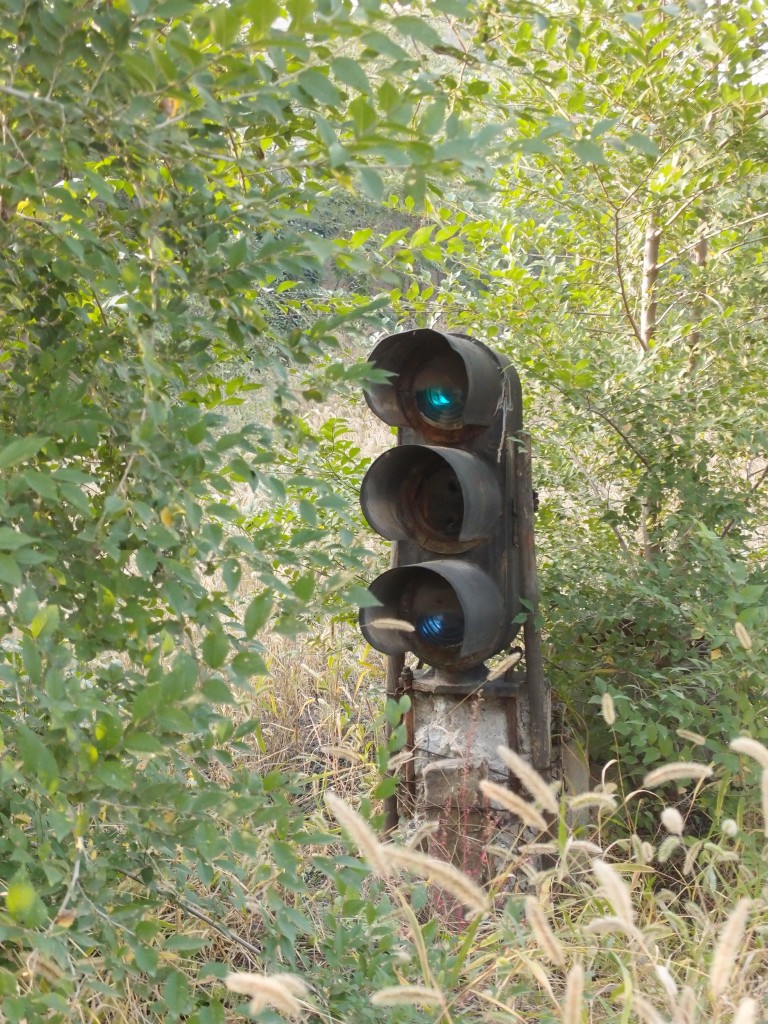
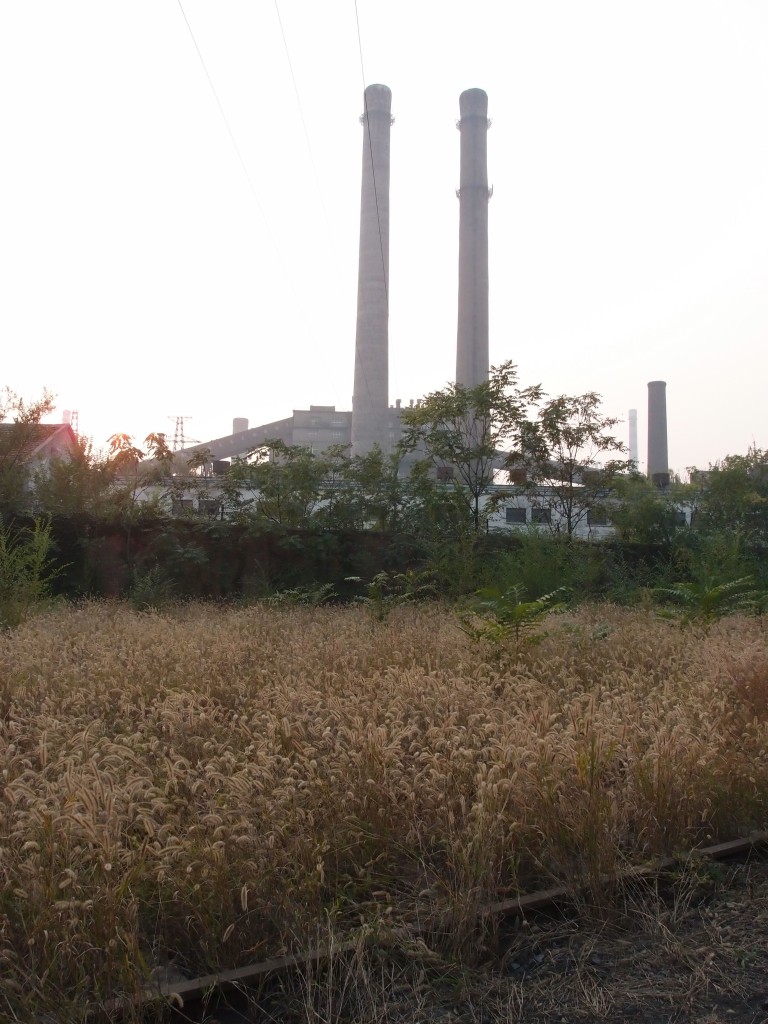

We then found very interesting old abandoned office buildings.

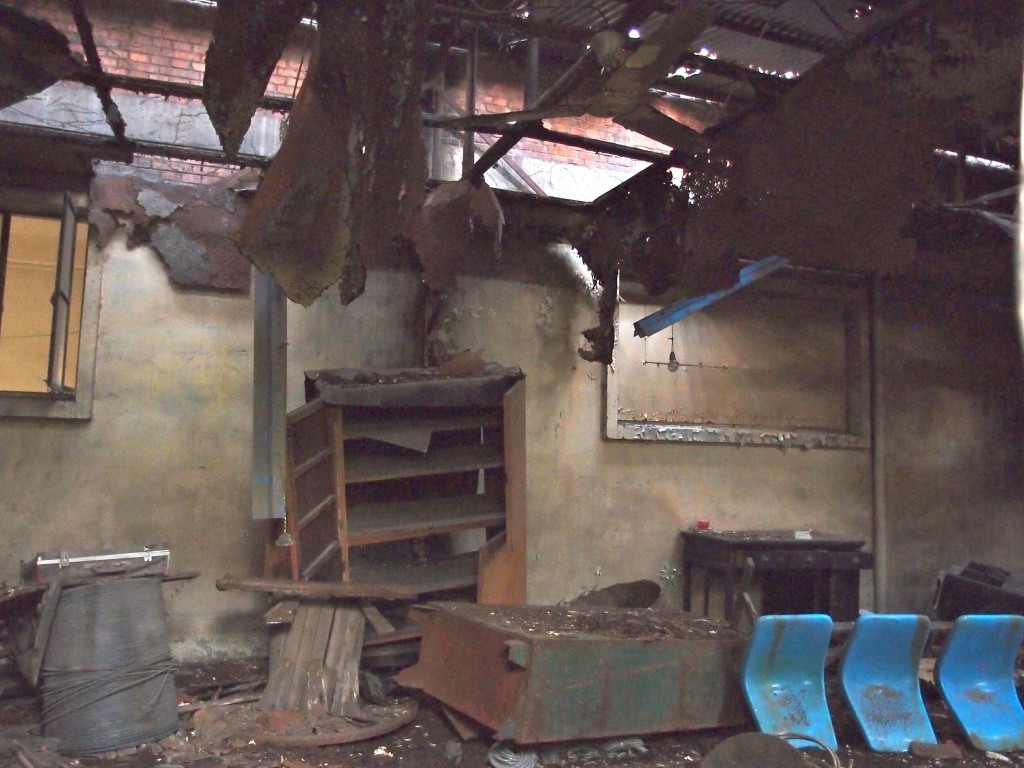
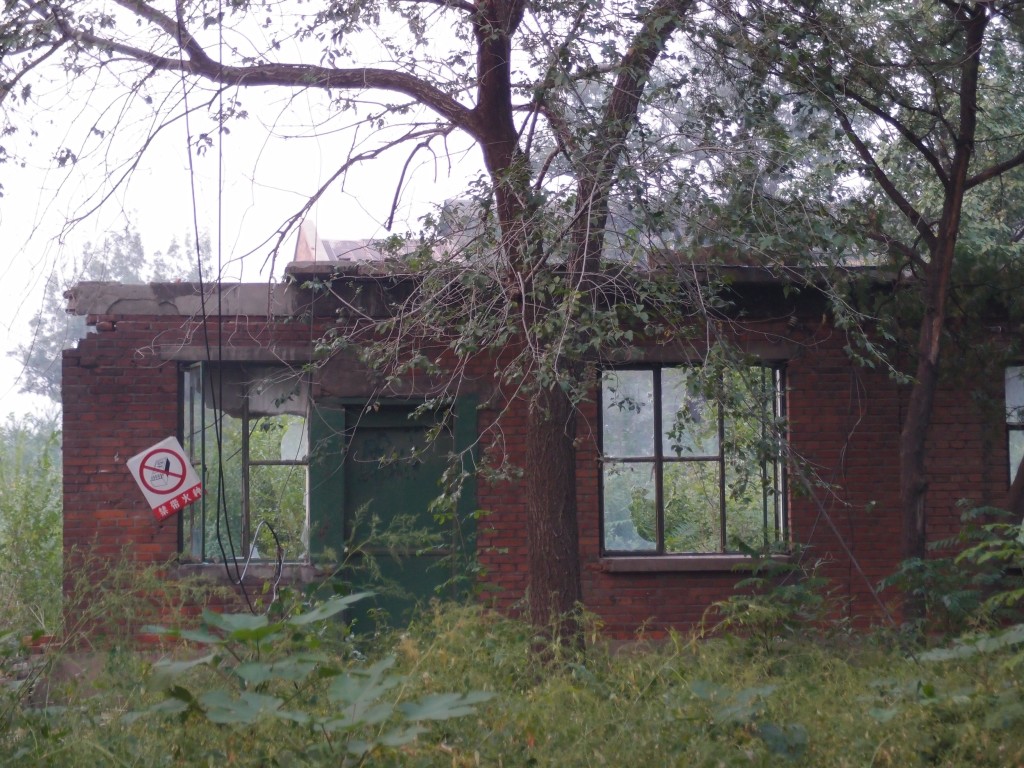

After two hours of exploration, we heard a very big noise of people working near us. We thought those people were factory workers but we had to go in their direction. We were surprised to find out that they were a group of trespassers, like us, stealing some of Shougang’s metal parts! They told us to go south, check the warehouses. On the inside roads, noone really paid attention to us. The workers we met told us they were demolishing buildings nearby. Then, we squeezed in through a blue metal fence and there they were, so high, so long, so large yet so empty and silent.
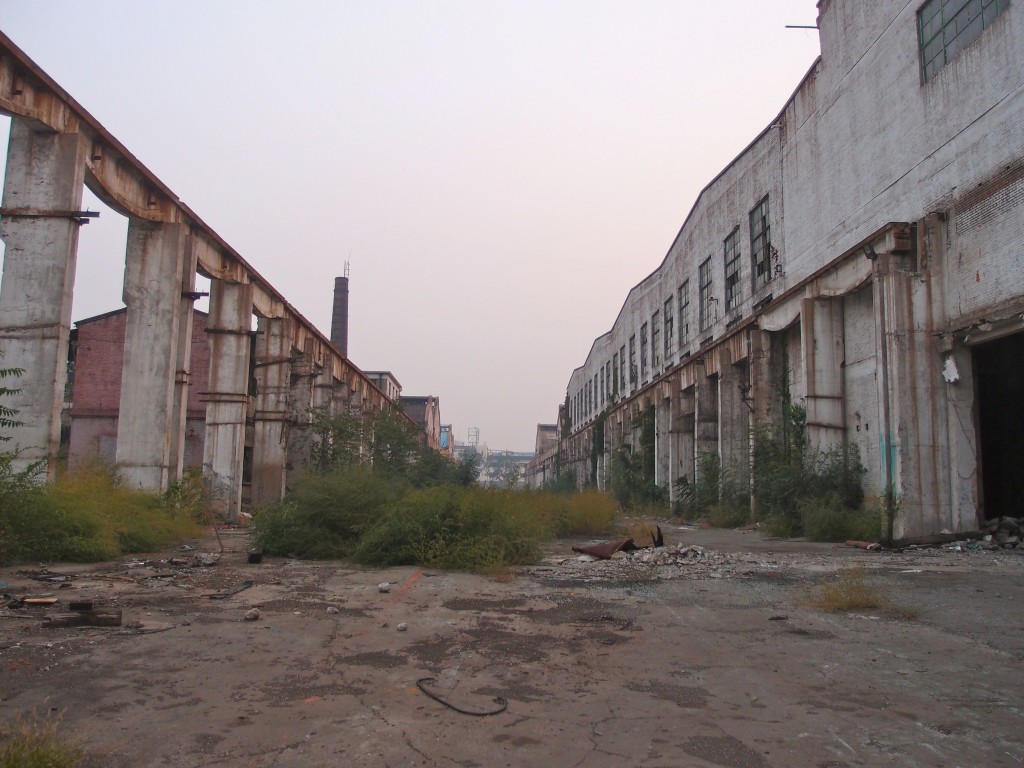
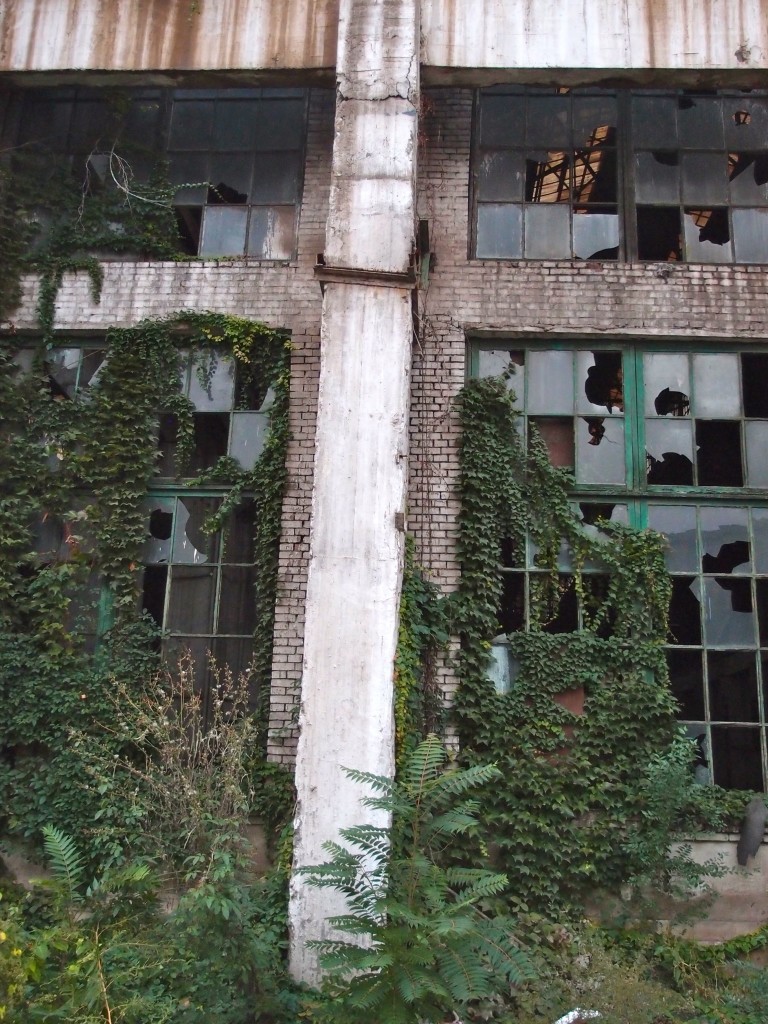

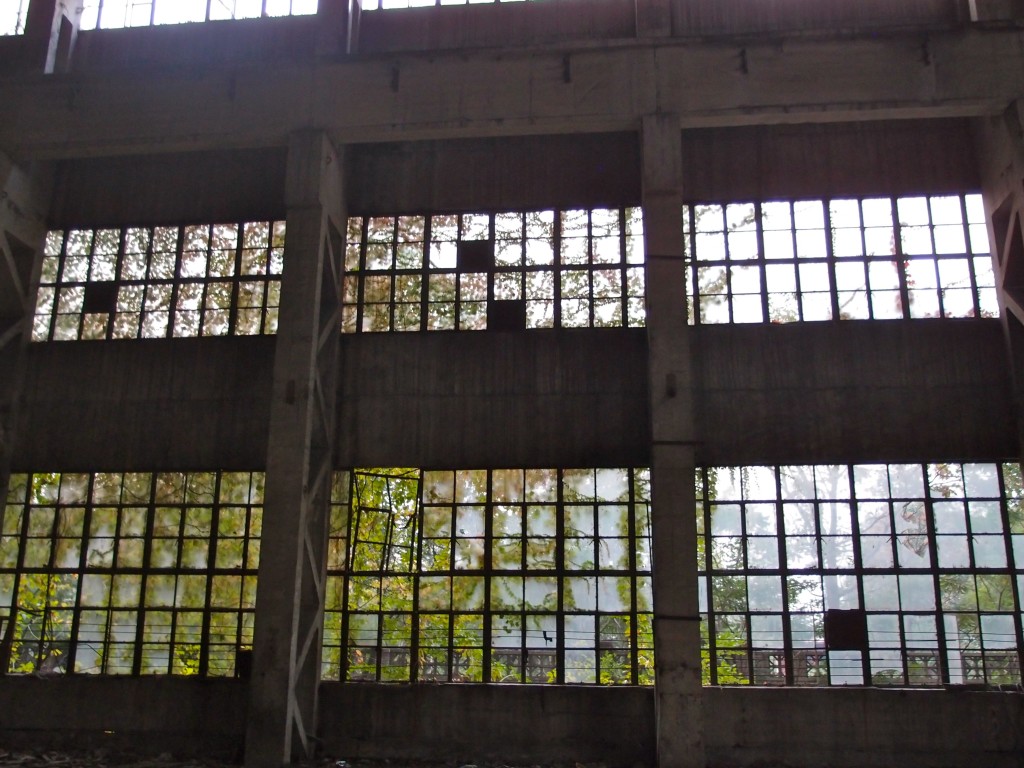
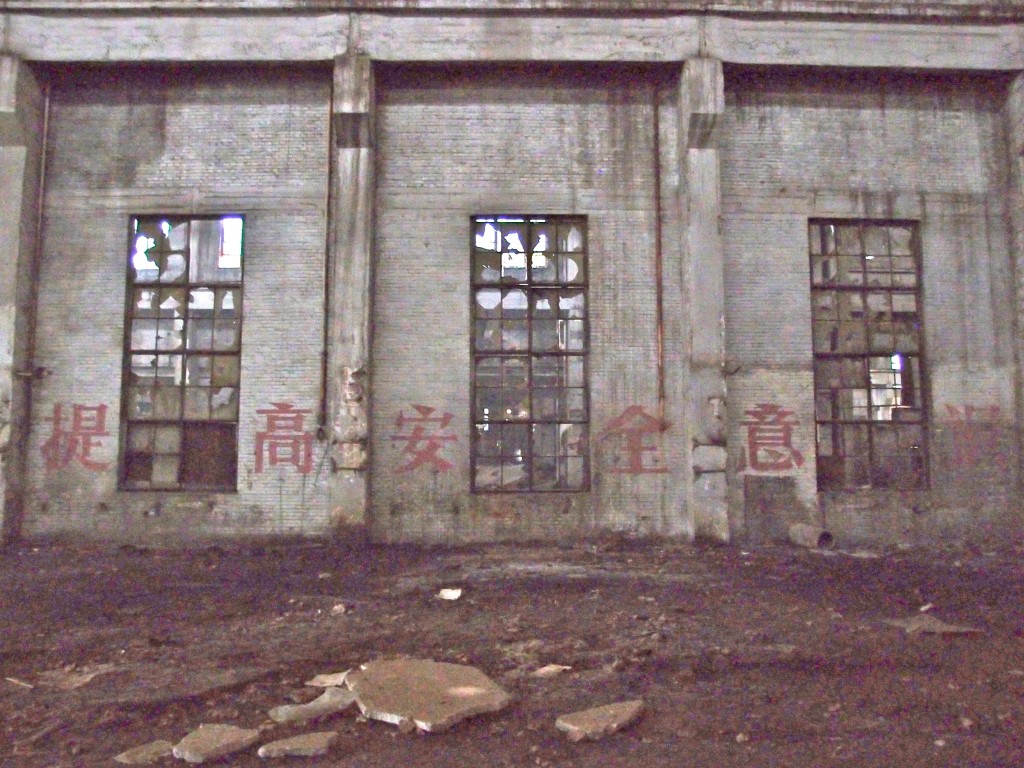

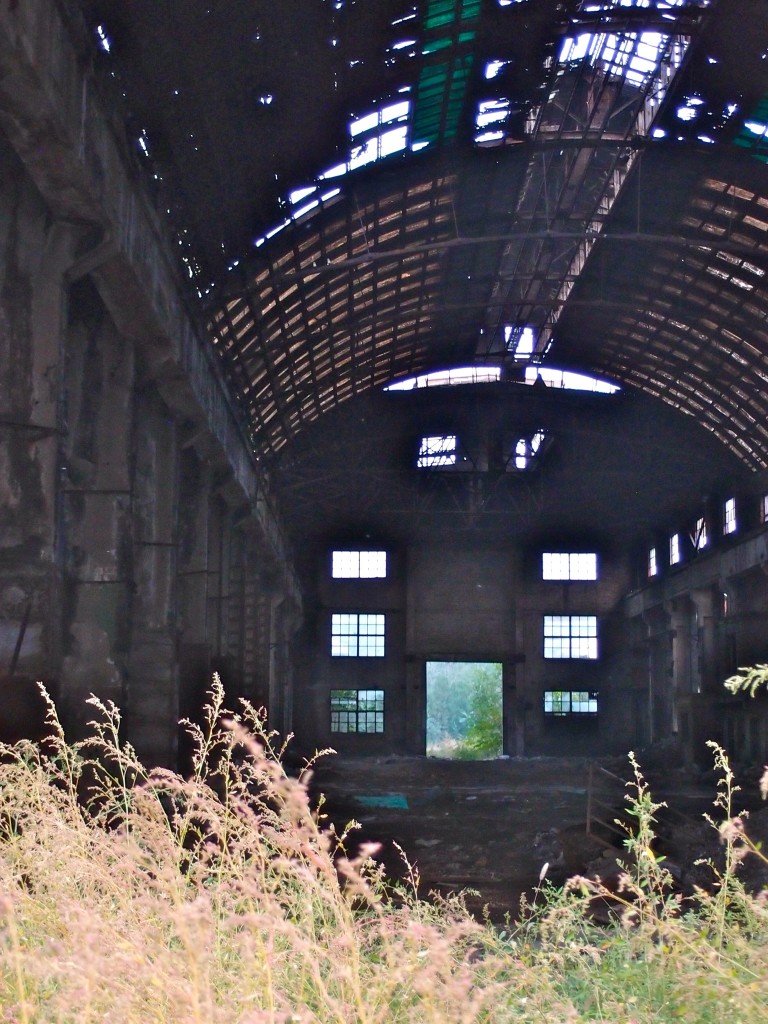
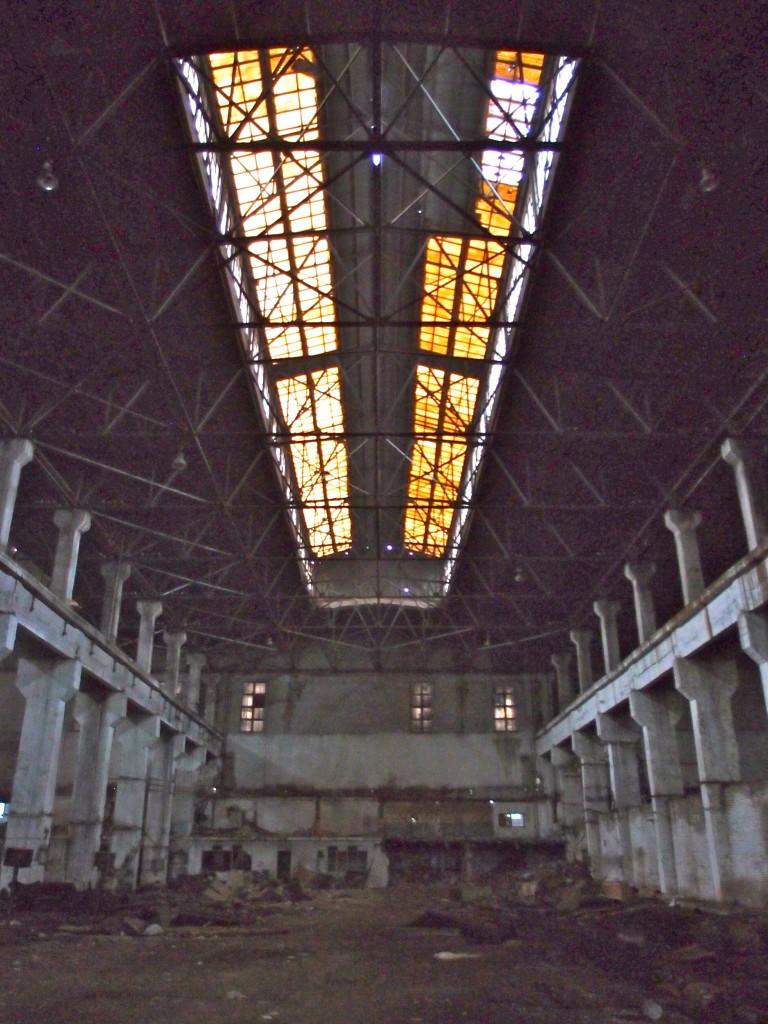
Second trip: industrial production elements
On the second trip with Gui, still during a week-end in October, we went further in the factory, and got to the core of industrial production with their crazy forms.
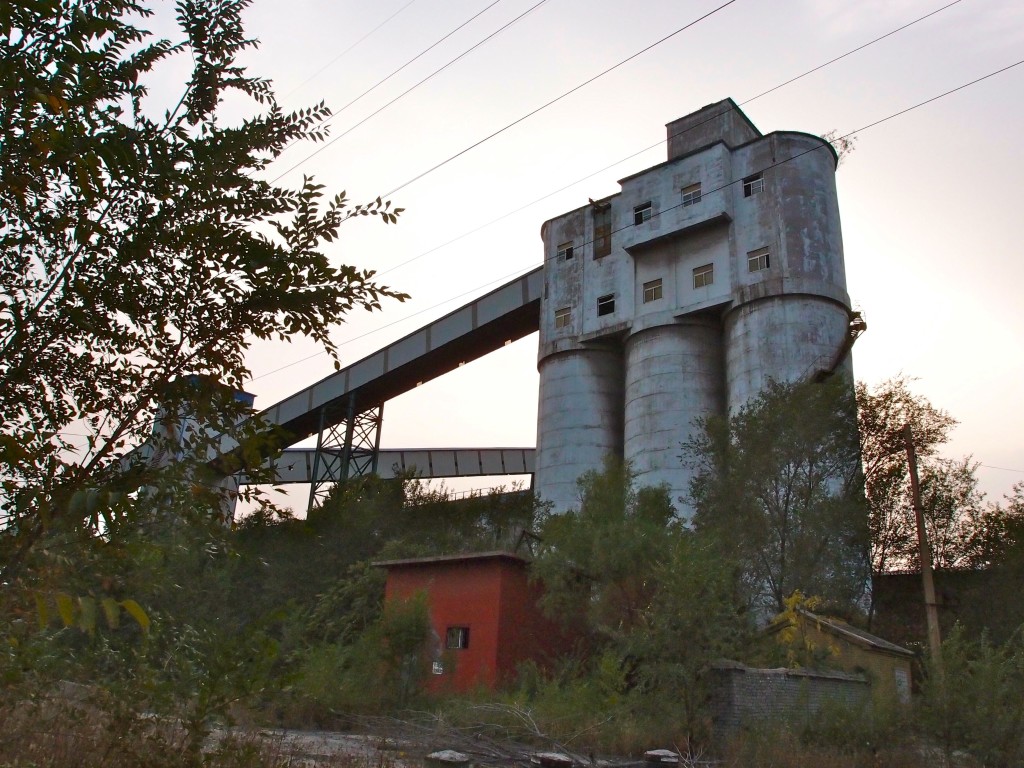
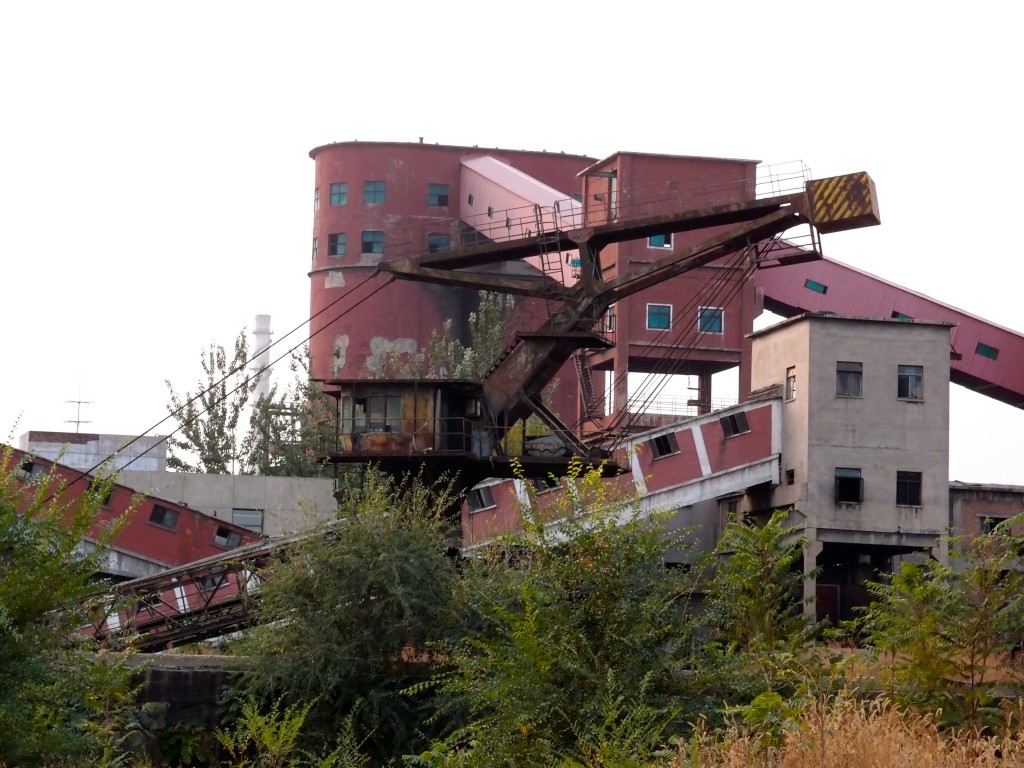
We could follow a little closer the production process, from the workers’ lockers to some of the industrial buildings.
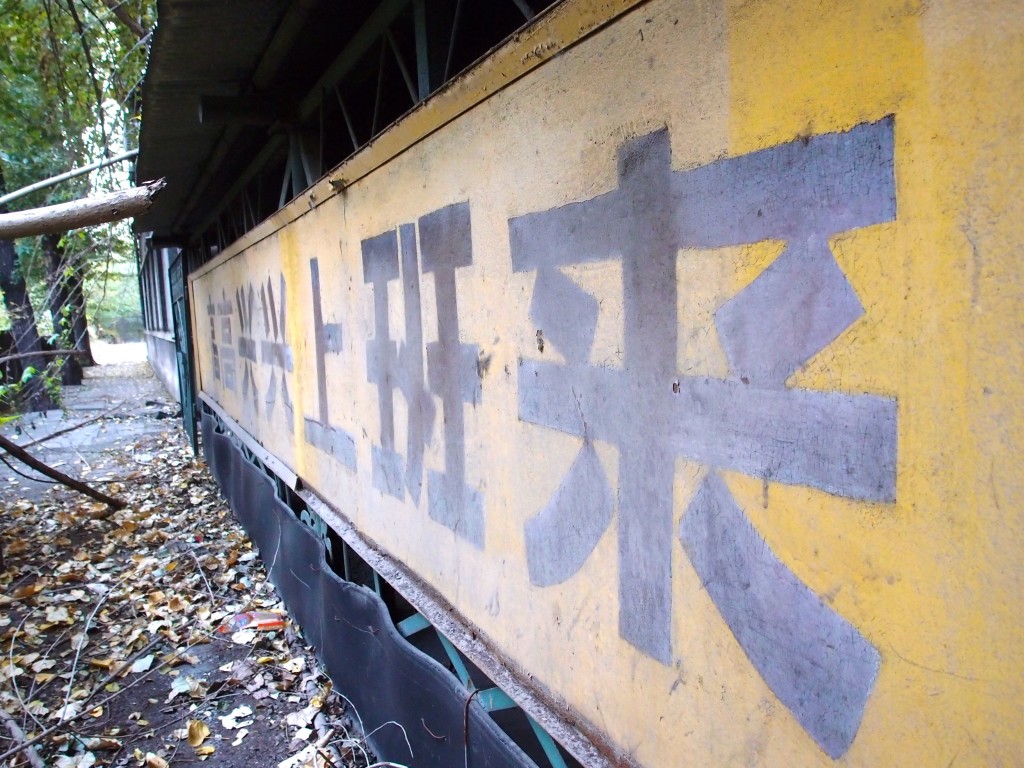
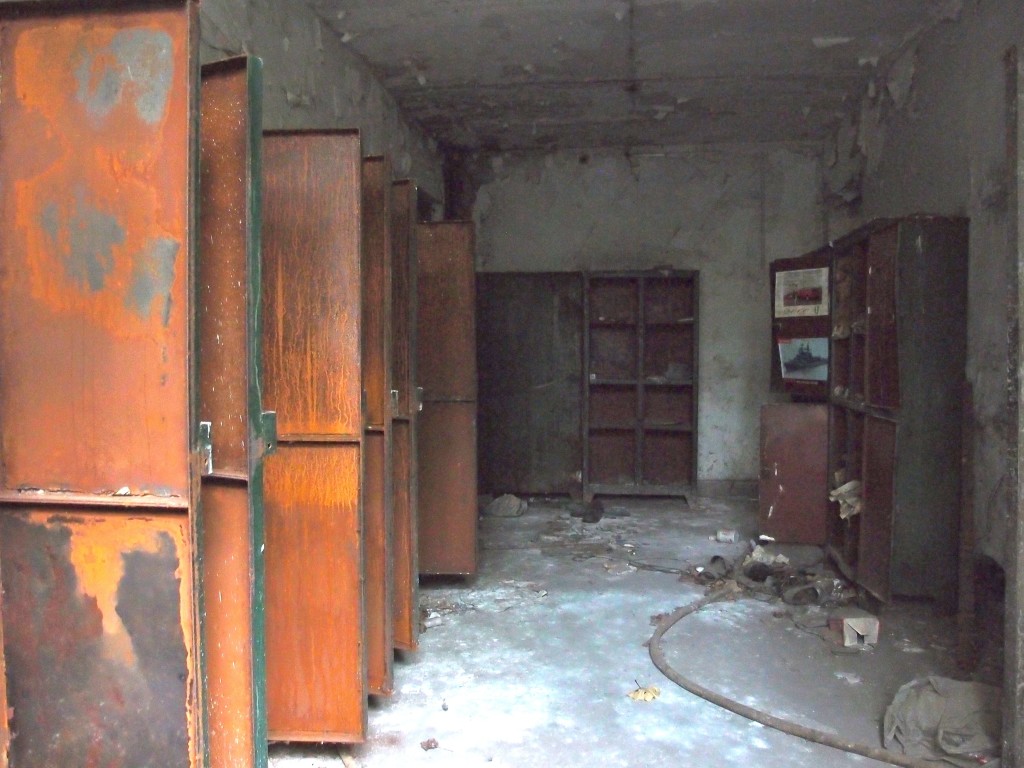
The metal components of buildings overgrown by nature are very beautiful, especially in autumn time.
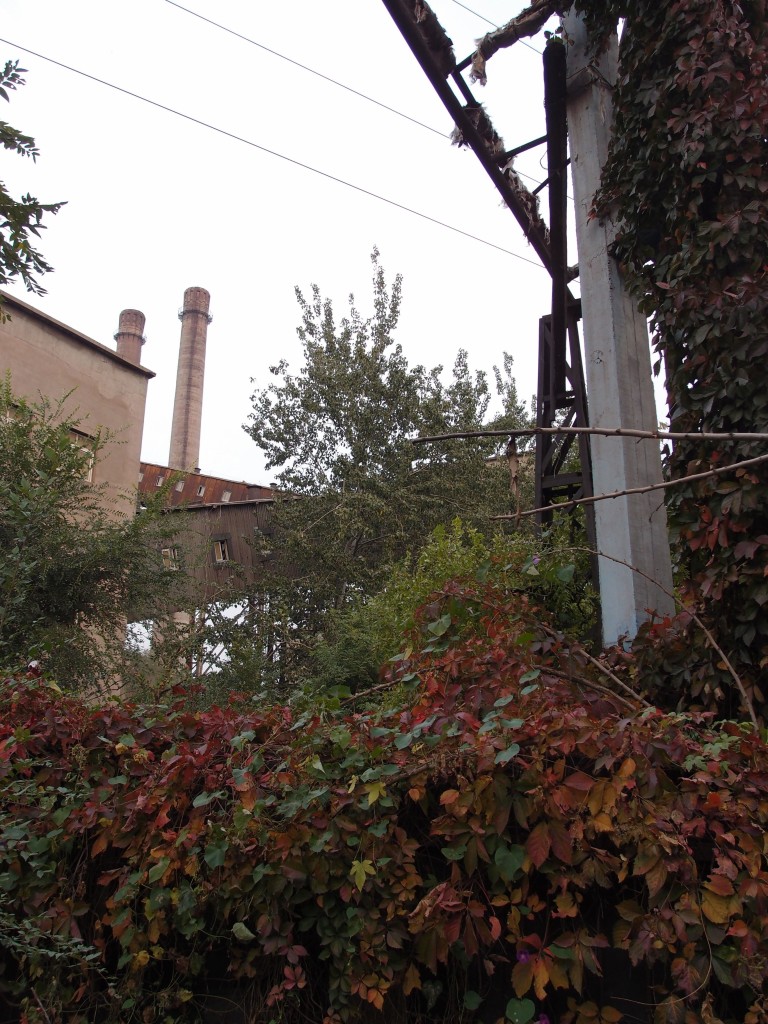
My English is too poor to tell you about the different types of industrial architecture we could admire, so just check out the pictures…
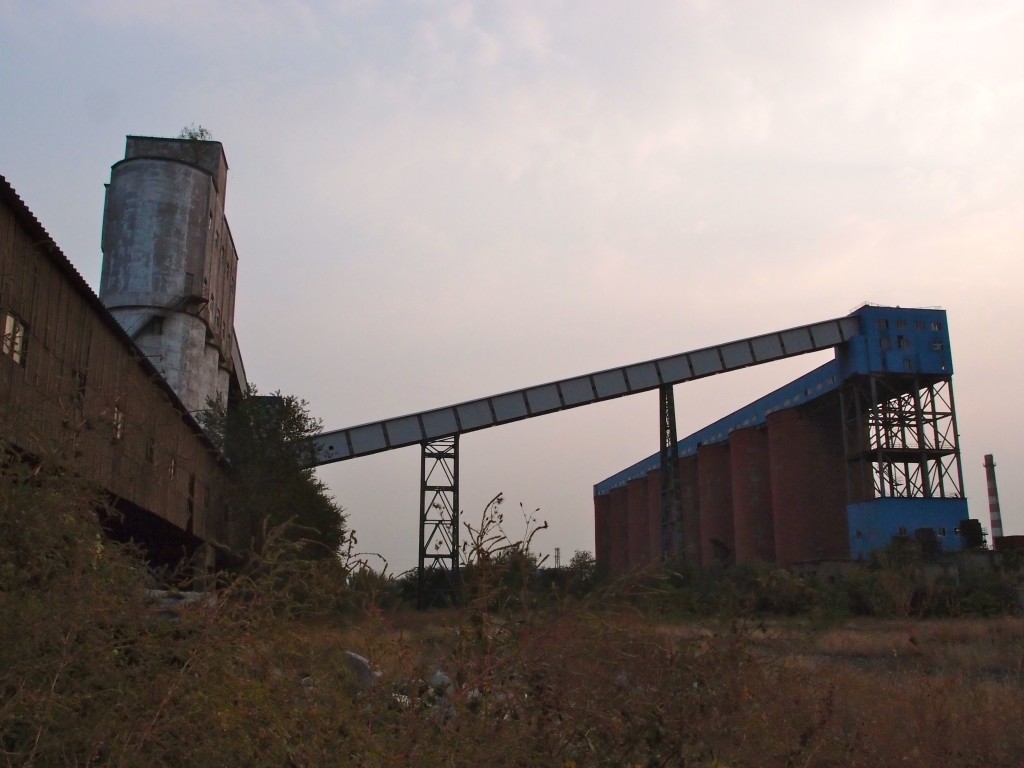

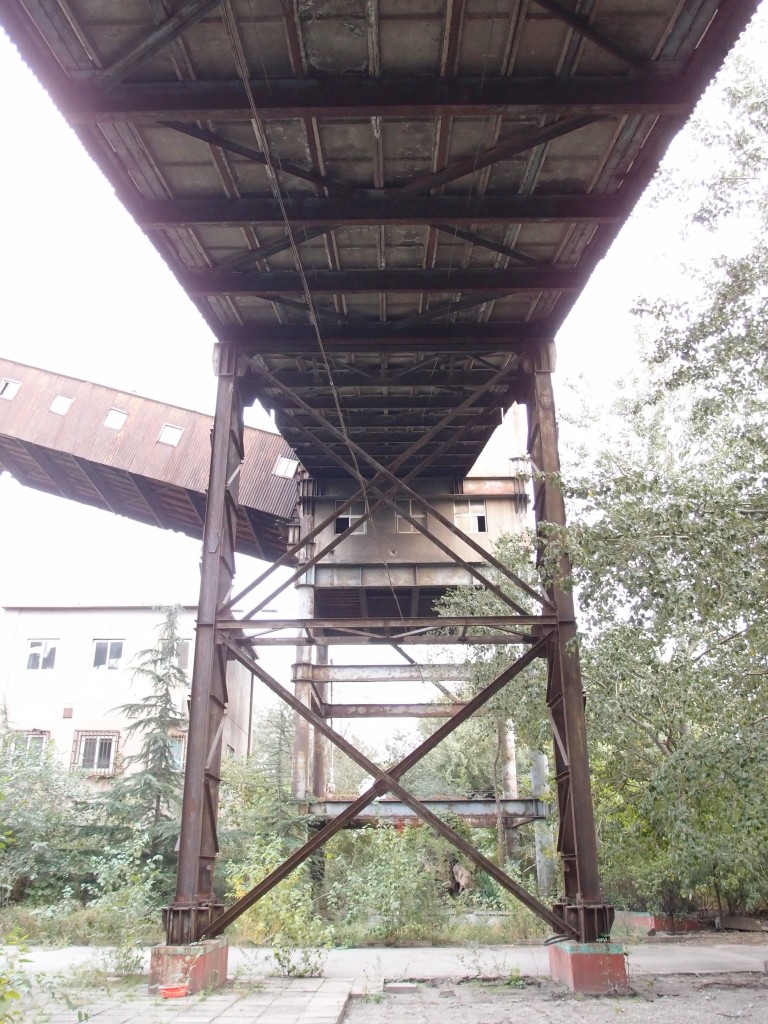

We spent two hours there as well, before it got dark. But there is still much to see, this is just the beginning of a long exploration…
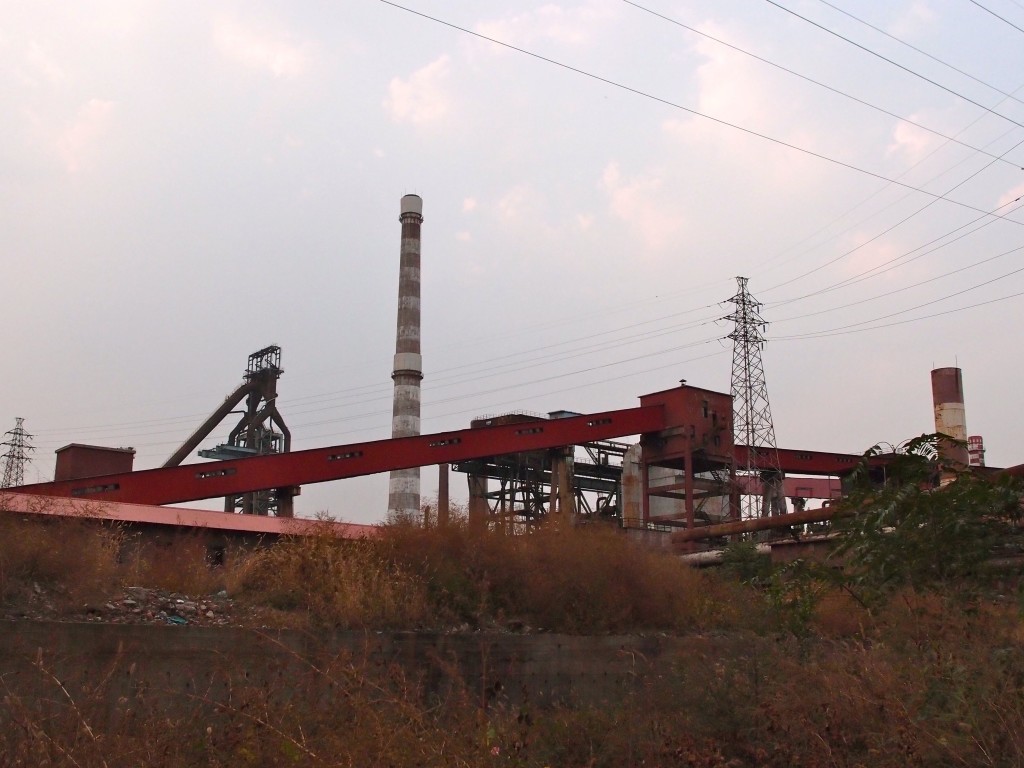
If you want to continue reading about Shougang, you can click here for my second report about this beautiful place.
Bibliography on Shougang’s renovation
- Philippo De Pieri, « Modern Beijing is no palimpsest city: its evolution is one of wiping off and replacing », The Architectural Review, 15 December 2015.
- Michele Bonino, Filippo De Pieri (eds.), Beijing Danwei: Industrial Heritage in the Contemporary City, Berlin, Jovis, 2015.
Other (much better) explorations of Shougang
I also love these reports by other urbexers:
- Brïn’s explorations of Shougang on the BURBEX website: He went many times. Inside Shougang’s laboratory is a fascinating post! You can also learn more about both the architecture and vocabulary of Shougang’s industrial forms on this exploration. And I just found out on his website that he also wrote about Shougang here… That guy is good!
- Zhao Yang / 赵阳, a Chinese photographer’s website called « Cooling Plan / 冷却计划 »: wonderful pictures, breathtaking visions of Shougang, especially from the inside of a cooling tower… Click here.
N.B. Une traduction française de cet article existe ici.
- Actually, it was on a hiking day trip passing by the factory by car that I remembered it and wanted to go in. ↩
- The first pre-exploration trip led my friend and I right into the redevelopment zone: workers are turning the northern parts of the factory into an art district. ↩
- Peter Nolan, China and the Global Economy: National Champions, Industrial Policy, and the Big Business Revolution, New York, Palgrave, 2001, p. 69. ↩
- See Erving Goffman, Asylums, 1961. ↩
- See Andrew G. Walder, Communist Neo-Traditionalism: Work and Authority in Chinese Industry, Berkeley, University of California Press, 1986. ↩

2 thoughts on “Shougang / 首钢”